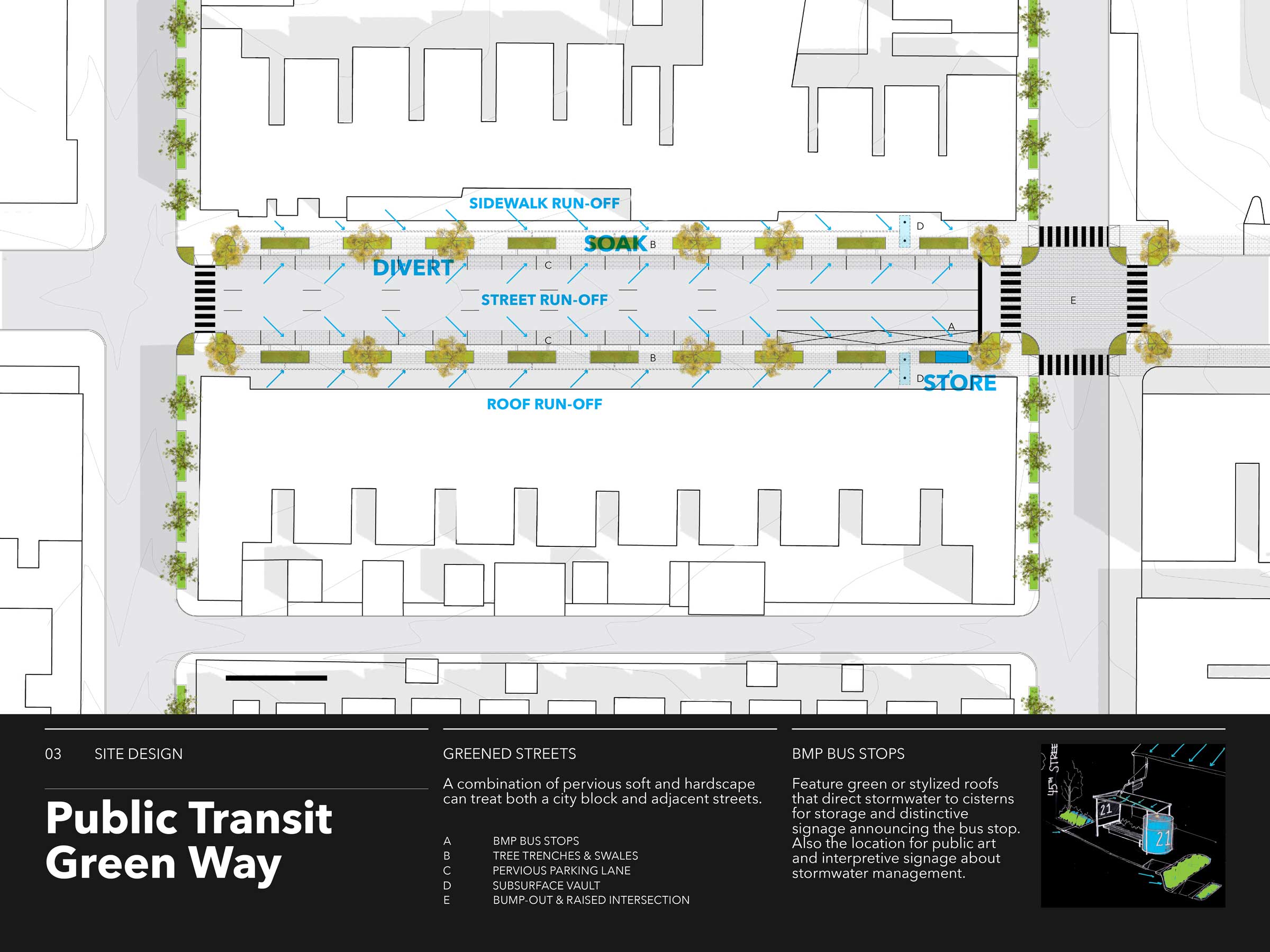

The Water, Landscape, & Urban Design studio at MIT analyzed the hydrological, social, and physical conditions of these neighborhoods. Through these studies, we were able to develop new proposals for infrastructure with benefits beyond stormwater management.
In addition to the natural hydrological system and built environment, several public transit lines cross through the project area. Transit stops define nodes that neighborhood residents use on a daily basis. Bus stops often coincide with the location of inlets at low points on many blocks.
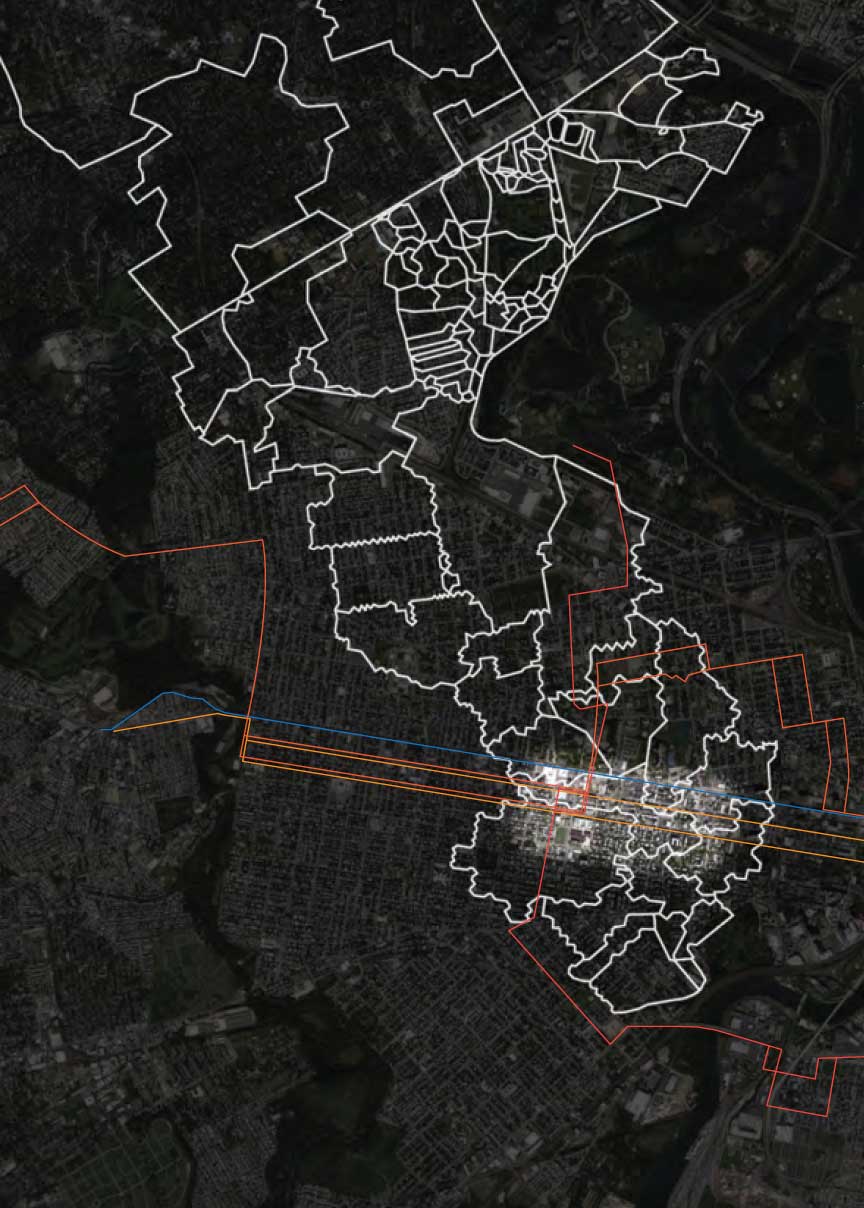
These low points were most likely part of the Mill Creek bed, about 3/4 of a mile from the creek’s mouth at the Schuylkill River.
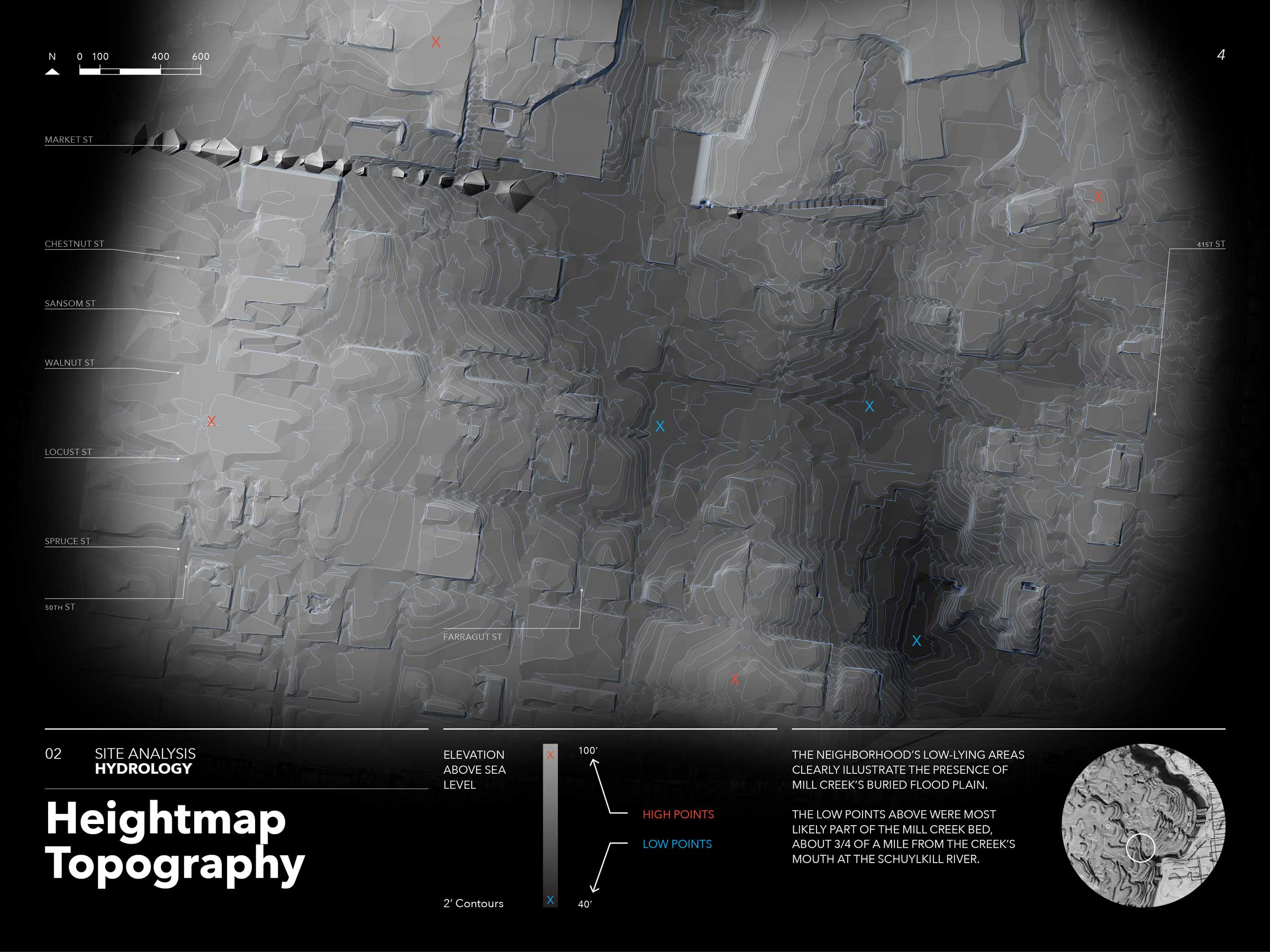
Following these flows, it is evident that surface water in the neighborhood drains to the site's center along the sewer main
This demonstrates that multiple sewersheds converged toward our original sewershed.
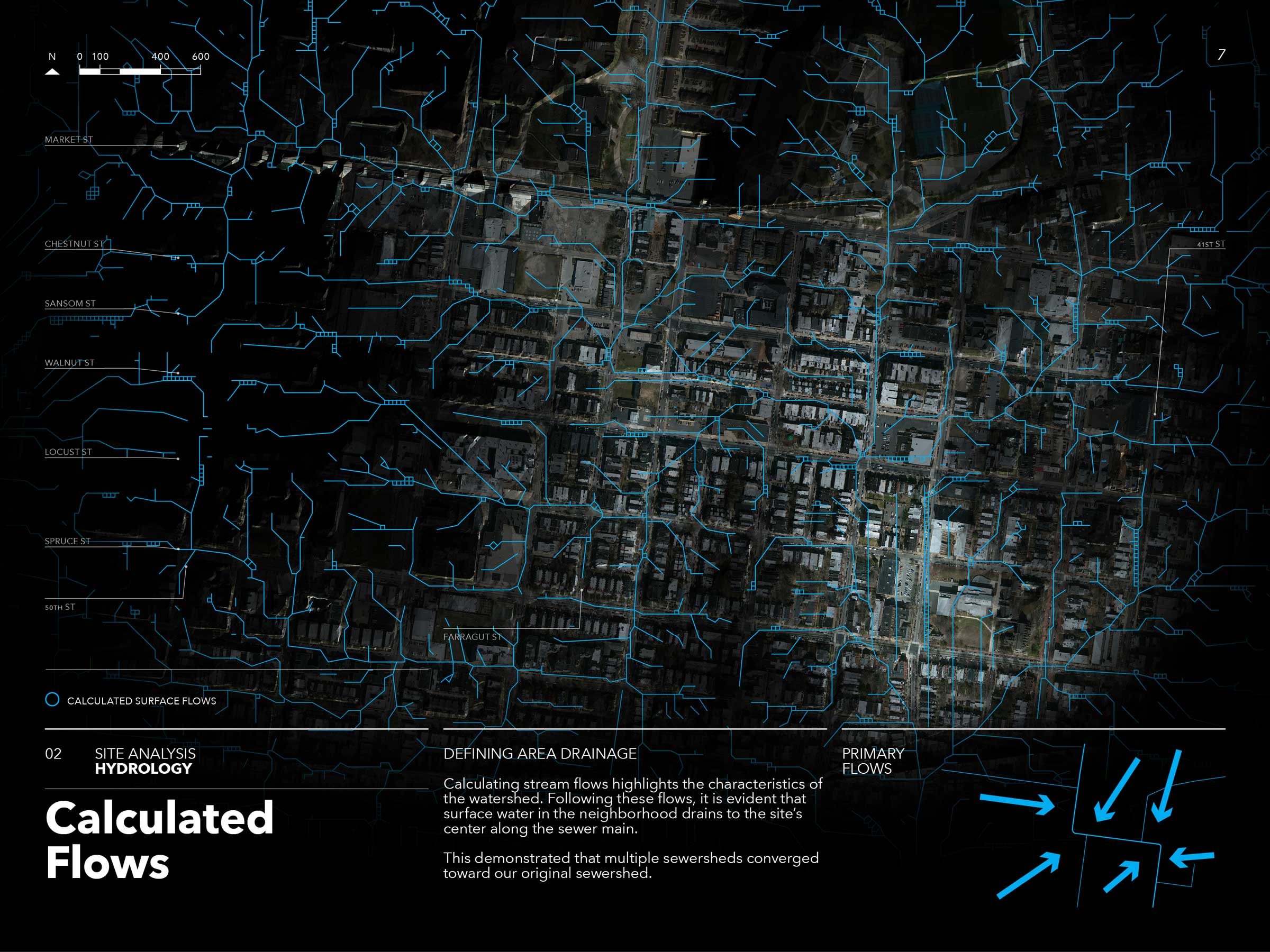
However, this also indicates that the implementation of stormwater management BMPs has huge potential to reduce sewer overflow events.
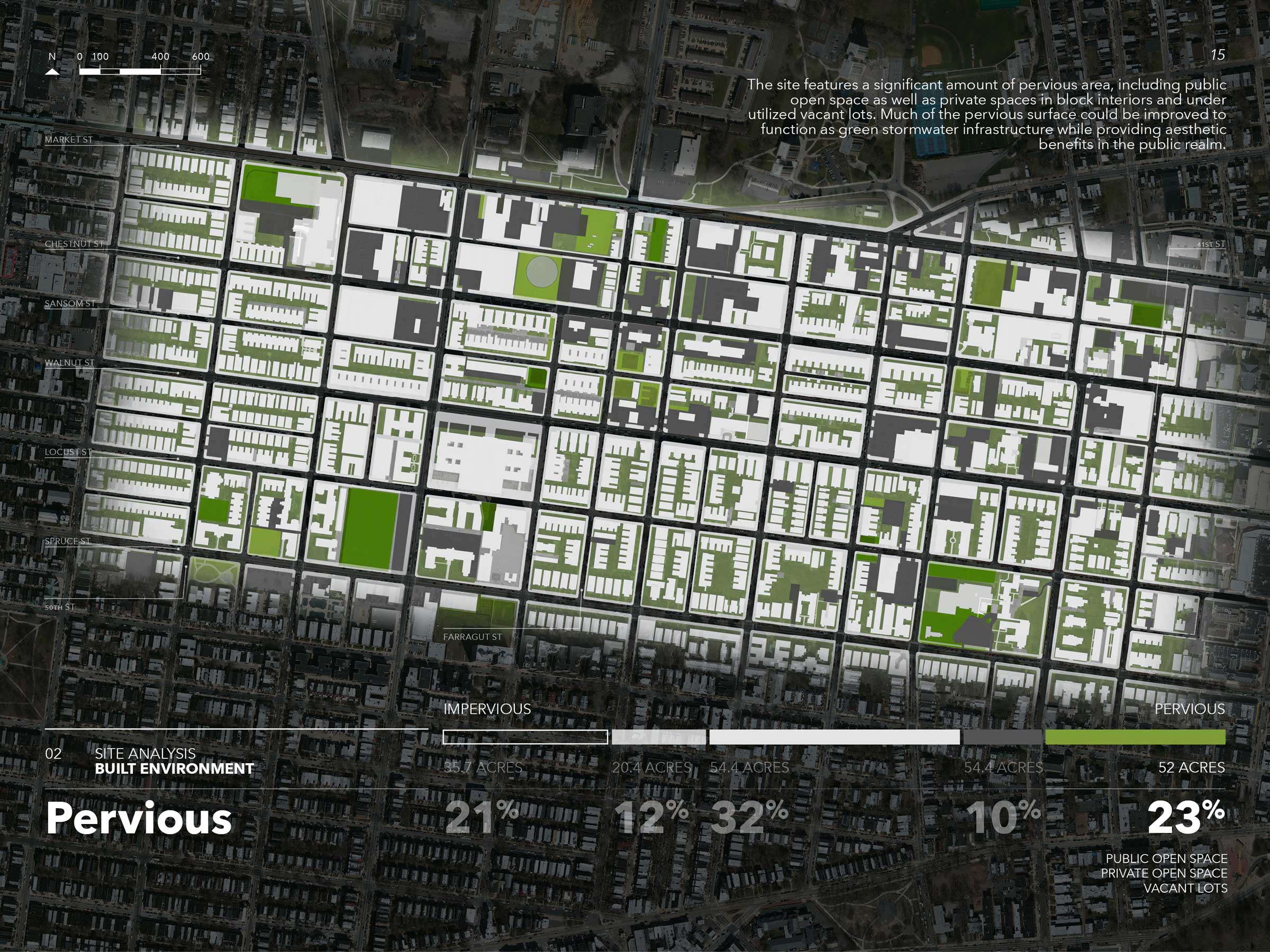
Furthermore, the fact that high volumes of commuter traffic flow along Market, Chestnut, and Walnut Streets every day makes BMPS along these routes highly visible.
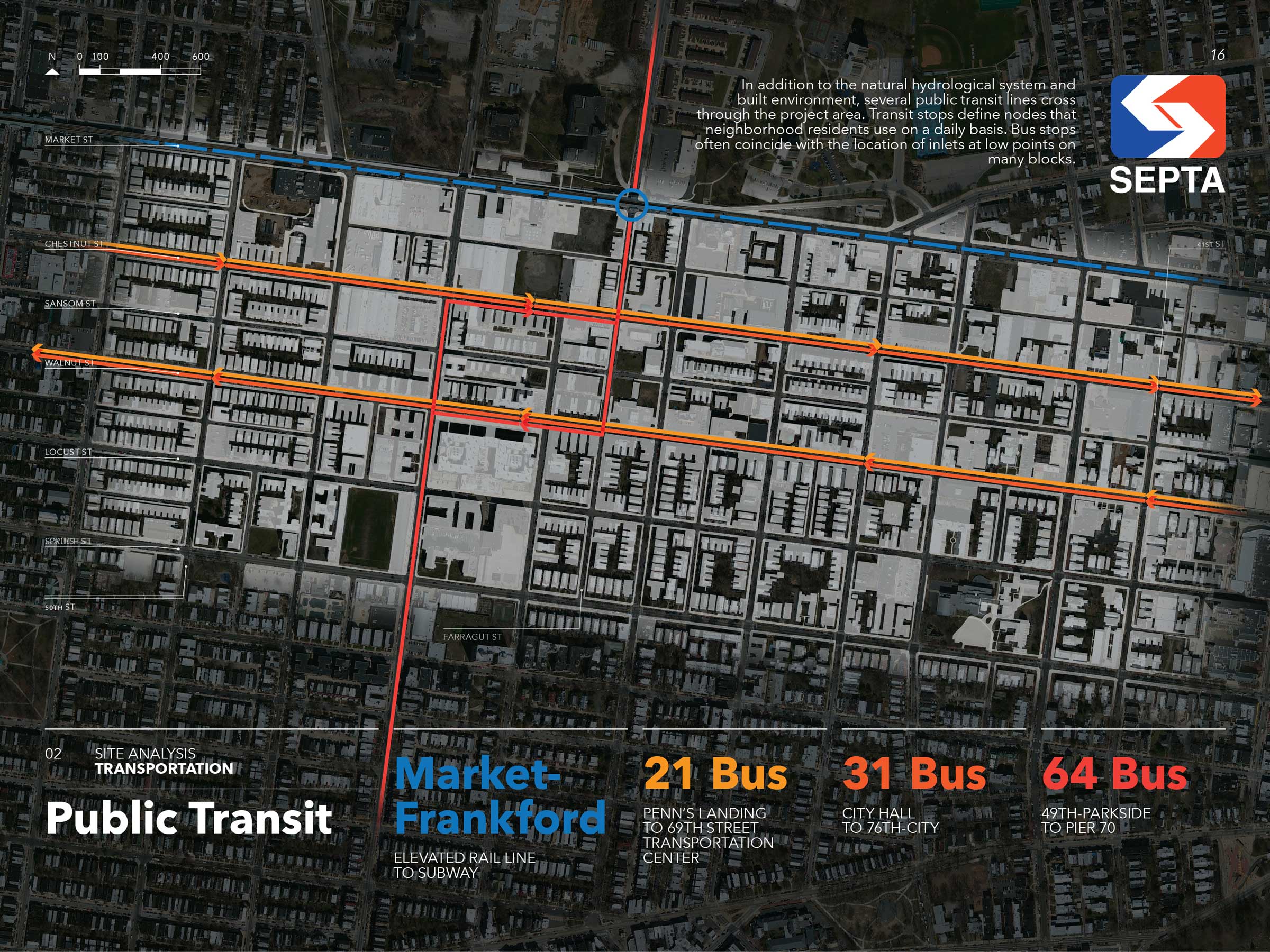
Collecting run-off from the elevated rail line:
Each section of track contributes around 130 cubic feet of run-off during a 1” storm that is sent directly into the combined sewer system from downspouts in the track pylons. By disconnecting the track downspout at the base of each pylon, stormwater run-off can be diverted into adjacent cisterns with a capacity of 950 gallons - a volume that holds 90 percent of run-off from each section of track during a 1” storm.

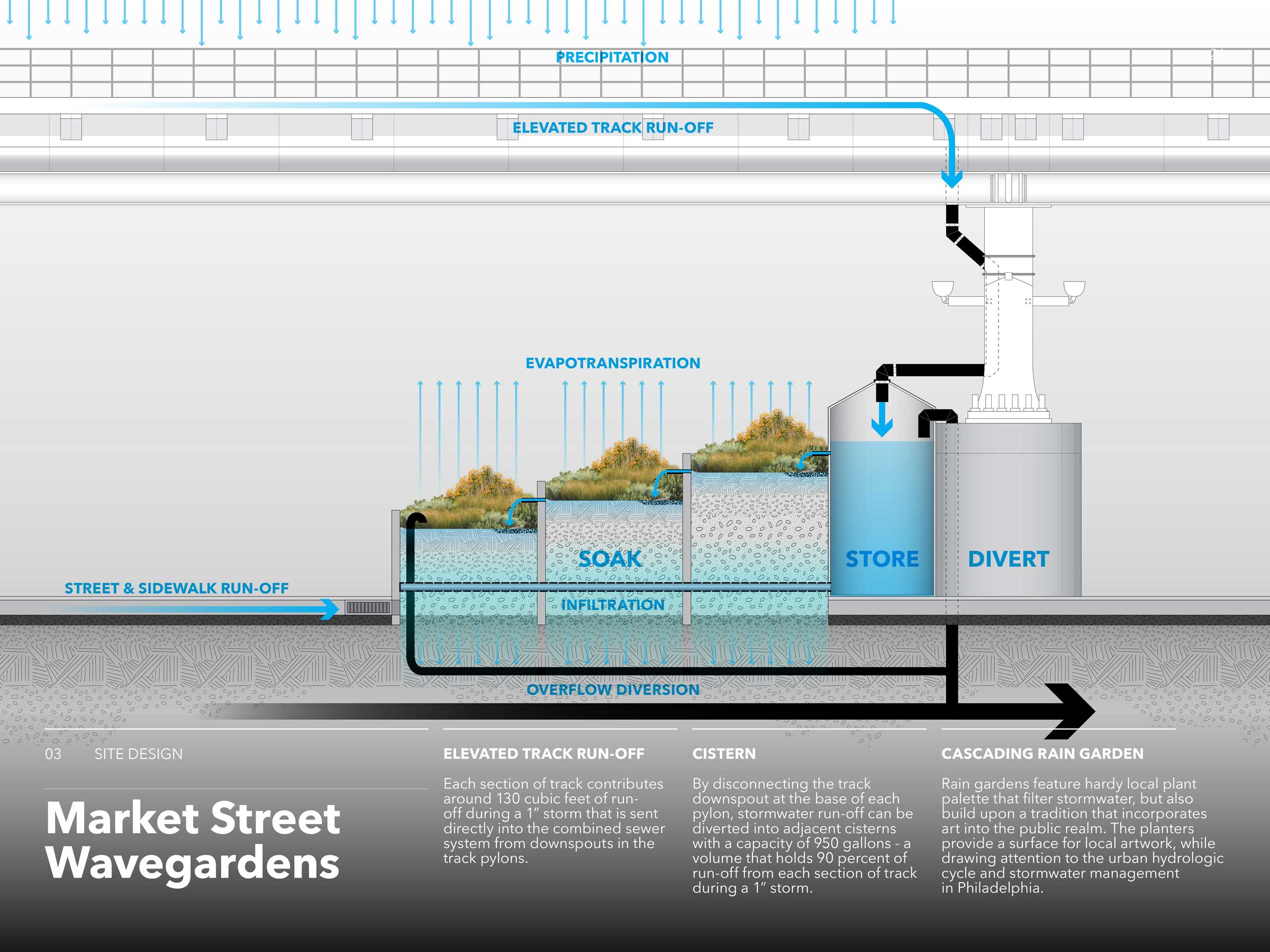
Public Transit Green Way:
Four bus lines cross the project area. Because most bus stops in the project area do not have shelters and coincide with low points and sewer inlets on many block corners, new shelters could be designed to divert or intercept run-off from streets and sidewalks before it flows into sewers. Green stormwater infrastructure along these highly trafficked routes would also be visible to many residents and can treat run-off from relatively wide streets.
Stormwater stored in cisterns can then be diverted to adjacent planters, which filter out harmful particles picked up from the tracks.
